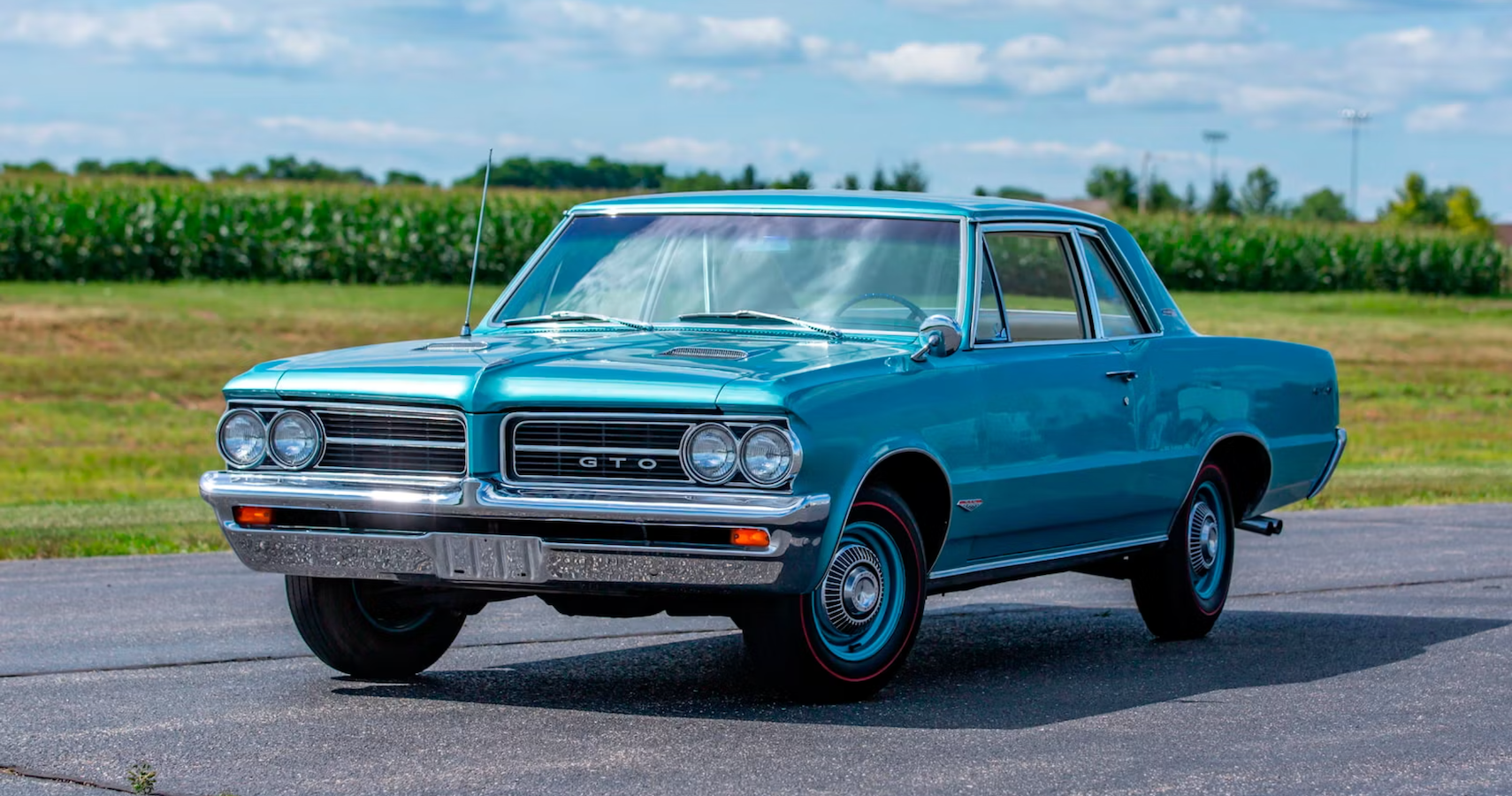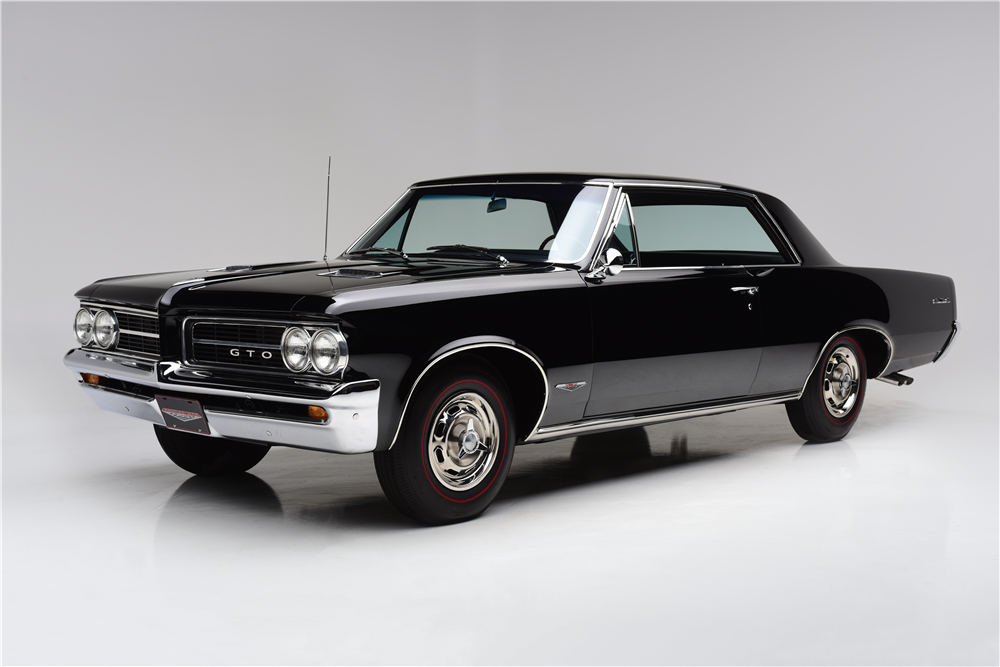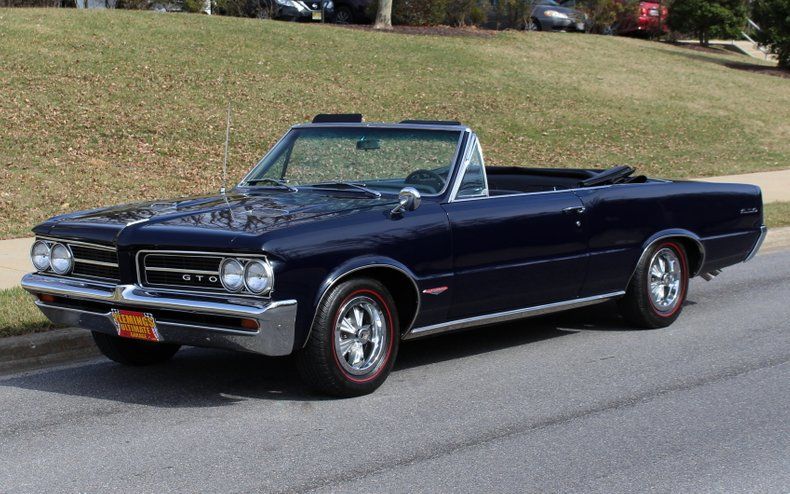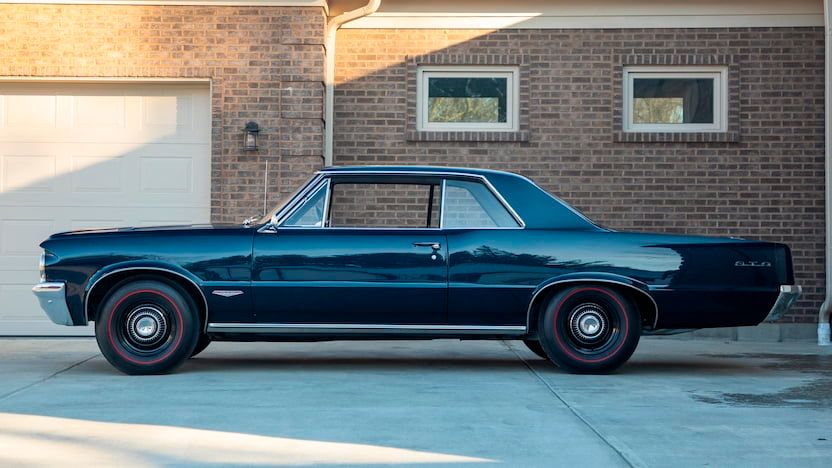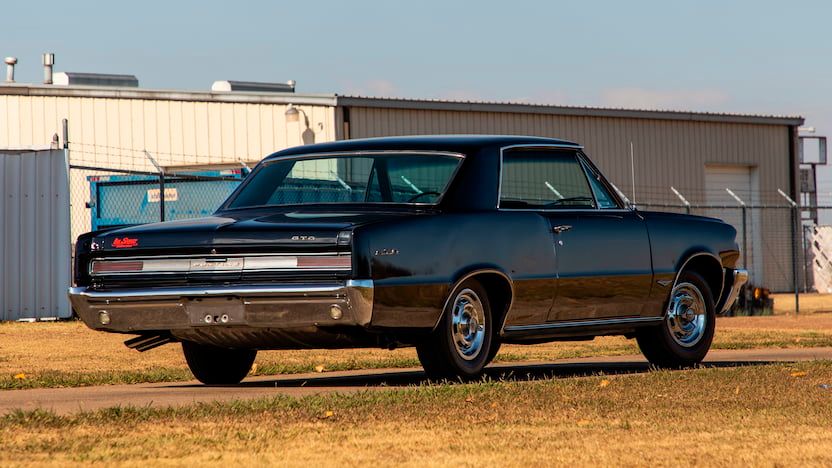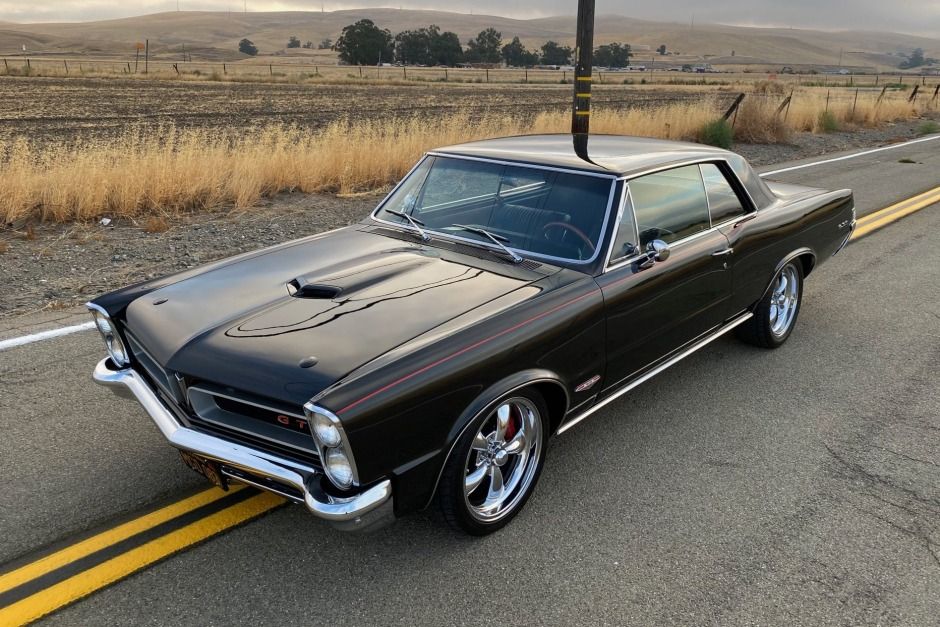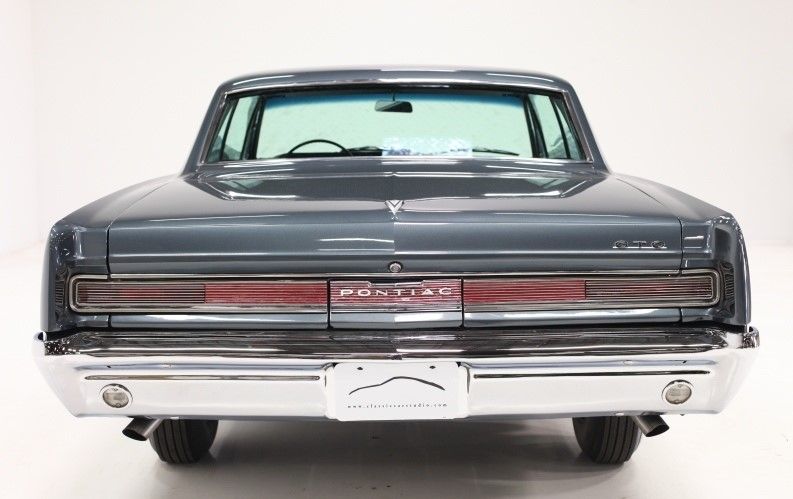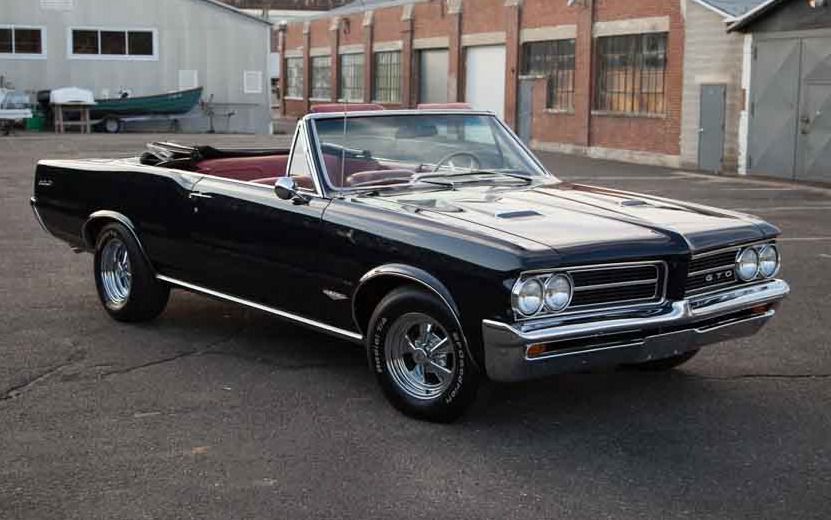We can almost hear the hotheaded guys at 196 Oakland Avenue in Pontiac, Michigan, ask the portentous question, "Why use one carburetor when you can have three? If we can, we will.” According to Palm Beach Post, the very first factory 3x2 Tri-Power setup became available on the 1957 Oldsmobile. It was called the W-code J2 option and topped off its powerful 371-cubic inch Rocket V8 with three Rochester two-barrel carburetors.
However, GM pioneered the three 2-barrel carburetor arrangement with the 1950s and 1960s Pontiac. It had the slang term “3 deuces” and was just the right step in the right direction of generating extra horsepower at a period when fuel injection engine technology was still considered a relatively recherché mill found in a select few automobiles.
Applied to the GTO, the Tri-Power setup provided an extra 23 horses above the single-carb Pontiac GTO. That meant brisker performance, especially when the engine is mated to the optional close-ratio 4-speed manual transmission. Independent road tests reported the Tri-Powered GTO to be a full second faster than its single-carbureted counterpart. Thus, the 1964 Pontiac GTO is indeed an archetypal American muscle car. Let’s check it out.
Origins Of The Pontiac GTO
Early 1963 saw the infamous auto racing ban by GM on its five-passenger car divisions, the reason for which is largely attributed to Robert Kennedy’s Antitrust Action against the big company in 1961. This development came on the heels of the 1957 voluntary ban on auto racing by the Automobile Manufacturers Association (AMA) as a delayed response to the disastrous 1955 Le Mans tragedy and the 1957 NASCAR Mercury Meteor crashes into the grandstands.
As a side note, the AMA ban was equally why Bill Mitchell and his secretive gang developed the 1959 Stingray racer in utter secrecy. Be that as it may, Pontiac’s selling points leaned heavily toward performance. But with GM prohibiting its divisions from involvement in auto racing, Pontiac switched its advertising and marketing focus to street performance.
Pontiac's then-head of marketing Jim Wangers credits the trio of Bill Collins, Russ Gee, and John DeLorean as the men behind the GTO’s creation, an idea that involved transforming the upcoming 2nd-gen Pontiac Tempest (which reverted to a conventional front-engine/ front transmission configuration) into a sporty car propelled by a larger 6.4-liter Pontiac V8 engine lifted from the full-sized Pontiac Catalina and Bonneville.
With the GTO rocking an updated 389 cu in (6.4-liter) from the standard 326 cu in (5.3-liter) V8, GM could target young drivers by promoting the car as a big-engine performance model. It was a calculated marketing strategy to corner the recently-discovered youth market that Ford’s Lee Iacocca’s 2nd-gen Mustang Falcon compact was equally eyeing.
While Pontiac adhered to its parent company’s ban on racing, it over-rode the restriction GM placed on the A-body (RWD) mid-size model to a maximum engine displacement of 330 cu in (5.4-liter). It wasn’t a bare-faced disregard of company policy, though. Rather, the GTO’s development team exploited a loophole in the policy which did not prohibit large engines from being offered as an option. Thus, Elliot “Pete” Estes, Pontiac’s GM, signed off on the GTO project, with production limited to 5,000 units.
The First-Generation Pontiac GTO
Pontiac produced the GTO for the 1963 to 1974 model years, although Holden (formerly General Motors-Holden), GM’s Australian subsidiary revived the models in Australia for the 2004 to 2006 model years. Most historians trace the roots of the muscle car tradition to the full-size 1949 Oldsmobile Rocket 88.
But pundits agree that the Pontiac GTO is the first true muscle car, along with the Tri-Powered Pontiac Tempest, as supported by the latter's impressive commercial success largely attributed to its floor-mounted 3-speed gearbox and hood scoops. Thus, the first-generation Pontiac set the pace for all four domestic automakers to catch up with a variety of competing models.
The sure way to identify a 1964 GTO is the VIN that starts with the number 82, while the 1965 GTO VIN began with 237. Pontiac also offered the GTO as an optional package with the 1964 and 1965 model years intermediate-sized Pontiac Lemans. It was crowned the Motor Trend Car of the Year in 1968.
The GTO would later become a separate model from 1966 to 1977 sporting a 242-starting VIN but reverted to an optional pkg for the 1972 and 1973 intermediate LeMans and as an optional trim pkg on the compact-sized Pontiac Ventura.
The 1964 Pontiac GTO Tri-Power In Details
The 1964 Pontiac GTO isn't considered the greatest in the '60s muscle car arena just for its alluring Coke bottle body, but for something else that was just $295 (around $2,600 in today’s money) away – the optional Tri-Powered powerplant. Yes, that mill is to thank for the 8,000 plus Pontiac GTOs snapped up by revheads in 1964.
The powerplant we speak of is the big-ass 389 cu-in (6.4-liter) V8 that Pontiac got from its full-size machines like the 1958 Pontiac Bonneville. This engine could make an impressive 325 horsepower at 4,800 rpm, an equally impressive maneuver around GM’s then-prohibition on engines larger than 330 cubic inches in intermediate-sized vehicles. But the question is how did the GTO’s development team do it?
The answer is the Tri-Power engine. In other words, Pontiac threw out the single Carter AFB 4-barrel carburetor in favor of a trio of 2-barrel Rochester 2G carburetors, allowing it to get a gulp-full of air and fuel on demand.
Standard equipment on the 1964 Tri-Power Pontiac GTO includes dual exhaust pipes, chromed valve covers and air cleaner, a seven-blade clutch fan, a floor-shifted 3-speed manual transmission with a Hurst shifter, stiffer springs, larger diameter front sway bar, wider wheels with 7.50 × 14 redline tires, hood scoops, and GTO badges.
Optional equipment included an updated 343 hp Tri-Power engine mated to a 4-speed manual transmission or a Super Turbine 300 2-speed automatic transmission, along with metallic drum brake linings, limited-slip differential, heavy-duty cooling, ride and handling package, as well as a tachometer mounted in the far right dial on the dash. A full optioned Pontiac GTO cost about $4,500 (around $40,602 in today’s money). We think it’s sad that this arrangement was somewhat short-lived.
While the Tri-Power option remained available through the ’64 and ’65 model years. Changing trends in engine technology, coupled with drivers’ reluctance to take on the taxing process of synchronizing carburetor linkages, inevitably spelled doom for multi-carburetor setups, with the exemption being serious racing and enthusiast applications. The 4-barrel single Rochester carburetor supplanted the Tri-Power option by mid-1966, around two years after the launch of the Tri-Powered Pontiac GTO.

